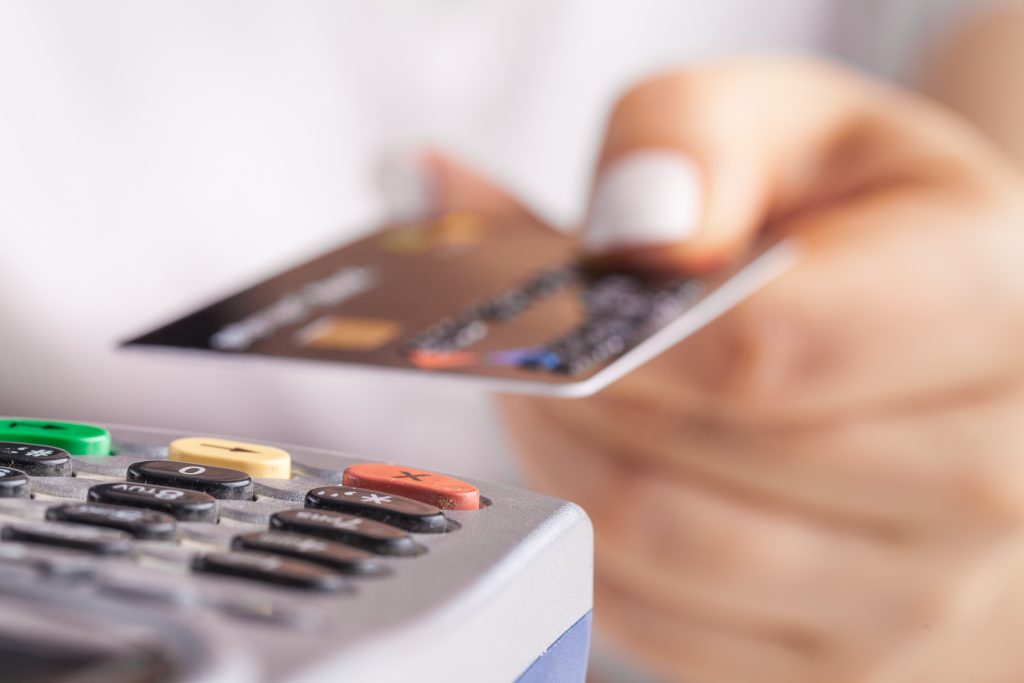Whether you interact with foreign transactions on a personal level or a business level, the ability to deal with international payments is a good skill to have. There are various methods of payment that can be used for cross-border purposes. For the best ways to accept international transactions, consider using these various methods below.

How to Accept International Payments
What is an International Payment?
According to the Canadian Payment Methods and Trends (CPMT) Report, there were an estimated total of $23.7 trillion worth of international payments made throughout the world in 2018. These statistics are based on the transactions made from one person in one country to another person in a different country.
Thanks to international e-commerce, cross-border transactions have been on the rise for the last decade. Businesses and individuals are increasingly looking to other countries to purchase goods and services. This worldwide commerce expansion is a trend that companies should consider taking advantage of. If you choose to take part in international trades, then consider these accounting tips for foreign currency bookkeeping.
Money Transfer Services
You can send and receive money internationally by using an array of services. These include financial institutions, credit unions, money transfer and cheque cashing businesses, and currency exchange services.
One of the main aspects of international payments is the conversion of currency from one dollar amount into another. To do this, these services typically charge a foreign currency transaction fee that will be added to the amount you are paying or receiving from abroad.
Always ensure the services you are using are trustworthy and secure before enlisting their help to send or receive money from abroad. Check with family and friends, or communities online to research the experience and professionalism of the services in question.
Best Ways to Accept International Payments
There are four primary forms of accepting international payments. These include:
- Online payments
- Money orders
- Wire transfers
- A letter of credit
You should always consider the exchange rate when implementing an international transaction. The Bank of Canada offers a currency converter to help individuals ensure the average aggregated price quote for the various currency conversion and exchange rates.
Online Payments and Remote Transactions
Within Canada, online payments and electronic transfers have become one of the most used methods of payment. These same platforms used to transfer funds within the country can also be used to transfer funds outside of the country.
Online international payments can be sent and received using platforms such as PayPal, Stripe, TransferWise, and others. These platforms offer users an easy to use foreign transaction service, with quick processing times and robust security features for reliable and safe transfers.
However, if you are sending and receiving international payments regularly, the fees attached to online payment services can be crippling. The cost per transaction typically falls between two and five percent of the amount.
This might seem small but will add up in no time. Also consider what country you will be issuing to outside of Canada, as not all countries in the world will have access to online payment services.
By Money Order
Money orders could be your best bet for individuals and businesses looking for fast and secure international transactions, without the need for both the sender and receiver to possess bank accounts. Typically a signature and photo ID is needed to accept a money order.
What is a money order?
A money order is a certified document that represents a specific and prepaid amount of money. A money order is similar to a cheque but is considered a more trusted method of payment.
This international method of payment is a fairly accessible format of sending and receiving money, meaning it offers convenience and ease of use for people situated around the world. As money orders must be sent using mail, rather than the internet, they generally have a longer process period than other methods of international payments. Canada Post facilitates postal money orders around the world, sending funds securely and reliably.
However, there can be a drastic downside to this method as transaction fees can be placed on both the sender and receiver, meaning one transaction can be charged twice for the cost of using the service.
Can you buy a money order with a credit card?
Typically, when obtaining a money order, the amount will come out of the sender’s bank account directly. The amount is paid upfront. Using a credit card to purchase a money order means using money that has been borrowed, much like a cash advance. This is a specific amount of cash that has been borrowed against your credit limit, which you will have to pay back with interest.
Therefore, although you can buy money orders with credit cards, it isn't the safest nor most fiscally responsible thing to do.
Wire Transfers
Wire transfers offer businesses and individuals a quick and secure way to transfer funds internationally. You can send near real-time, irrevocable payments throughout the world using this method of payment.
What is a wire transfer?
A wire transfer refers to transferring funds from one financial institution or service to another institution or provider. The sender of the wire transfer will pay the amount upfront at the financial institution, which will then be sent through a secure system and deposited to the other institution, whereby the receiver can access the money.
Information needed for successful wire transfers
To send wire transfers, you will need to provide accurate information to bypass transfer delays and issues. For an accurate transfer of funds, you will need to list the information below.
Sender’s information:
- Full name and address
- Bank name and branch address
- A five-digit transit number of the bank from which the funds are sent
- Account number from where the funds will withdraw
Beneficiary, or receivers, information:
- Name of the beneficiary has shown on their bank account
- Address
- Bank account number
- Transit number of the branch where the funds will be deposited
- Beneficiary’s bank information: institution name, branch address, postal code, and SWIFT Business Identifier Code (BIC) if available, or routing information
Payment information:
- Total amount
- Value date using YY/MM/DD format
- Fee details: who'll be responsible for the wire transfer service charges
Check out this payment guide on wire transfers to learn more.
How long does a wire transfer take?
Wire transfers typically take anywhere between two to five business days for international transactions. The money may be deposited from one account to another almost instantly, but the payment must first be cleared by both the sender and receiver’s financial institution before it can be accessed.
Letter of Credit
A letter of credit, also referred to as a credit letter, is documentation produced by a bank that guarantees the accurate and timely payment from a buyer to a seller. If for some reason the buyer fails to make the payment, the bank is required to cover the full amount originally agreed upon.
Letters of credit are widely used in the international trade industry as they provide a reliable form of payment between parties that are far away from one another, and may not know each other personally. These credit letters bridge the gap between different country laws regarding the buying and selling process.
As far as transaction fees go, the bank issuing the letter of credit will collect a fee for facilitation. Typically, the cost of the fee is a percentage of the amount stated on the credit letter.
Types of credit letters include:
- Commercial Letter of Credit: The direct payment from the issuing bank to the beneficiary.
- Confirmed Letter of Credit: Involves a transaction between the issuing bank and a second bank, by which the second bank, typically the seller’s bank, is responsible for paying the credit if the holder and issuing bank default. Banks generally choose this type of credit letter when dealing with international transactions.
- Revolving Letter of Credit: Allows the holder to make any number of withdrawals within a specific time frame.
Travellers letter of credit: for individuals travelling abroad, this letter certifies the issuing bank will honour any transactions at a foreign bank.
FAQ:
How long do international payments take to process?
Depending on the method of transaction and the sender and provider locations, international payments can take anywhere from 1 to 5 days to process. Typically, after processing, the amount will become available in your account on that day.
Are there any foreign transaction fees?
A foreign transaction fee is an added cost you must pay when using a service to send or receive money internationally. The charges incurred for these international transfers will differ from service to service. Some financial institutions and businesses will offer flat fees, while others will vary depending on how much money is changing hands.
Therefore, checking the transaction fees is a vital part of settling on a service that will facilitate the transfer for you.
Why should I accept international payments?
The global economic market continues to expand annually as technological advancements bring us closer together than ever before. With e-commerce taking huge gains in recent years, the shift towards international business is steadily increasing. Expanding your market to cover the increased trade between countries and accepting payments internationally could help improve your small business’s bottom line.
What is the safest way to transfer money internationally?
One of the most secure forms of international money transfers is with your bank. Financial institutions offer the best security when dealing with cross-border transactions. However, they may not give the best rates, making them a bit more expensive than other less secure options.
How do I record foreign currency transactions in QuickBooks?
Make international payments and foreign transactions a breeze for your small business with QuickBooks Online. Easily set up and use multi-currency features by following these steps:
- First backup QuickBooks company files first and foremost, as once you turn on the multi-currency feature, you cannot turn it off.
- From your dashboard, select the Gear icon, then click on Account and settings.
- From there, select Advanced, then scroll down and click on Multicurrency.
- Click on the toggle and check the box I understand I can’t undo Multicurrency.
- In the drop-down menu, select your home currency, then click Save.
Using QuickBooks software, businesses can also add foreign-currency customers and suppliers, foreign-currency accounts, update exchange rates, and create foreign-currency transactions.
You’ll also be able to create easy foreign currency invoices and send and receive money with secure payment options. It's easy to use QuickBooks to accept payments from clients throughout the world. Why not try it free today?


